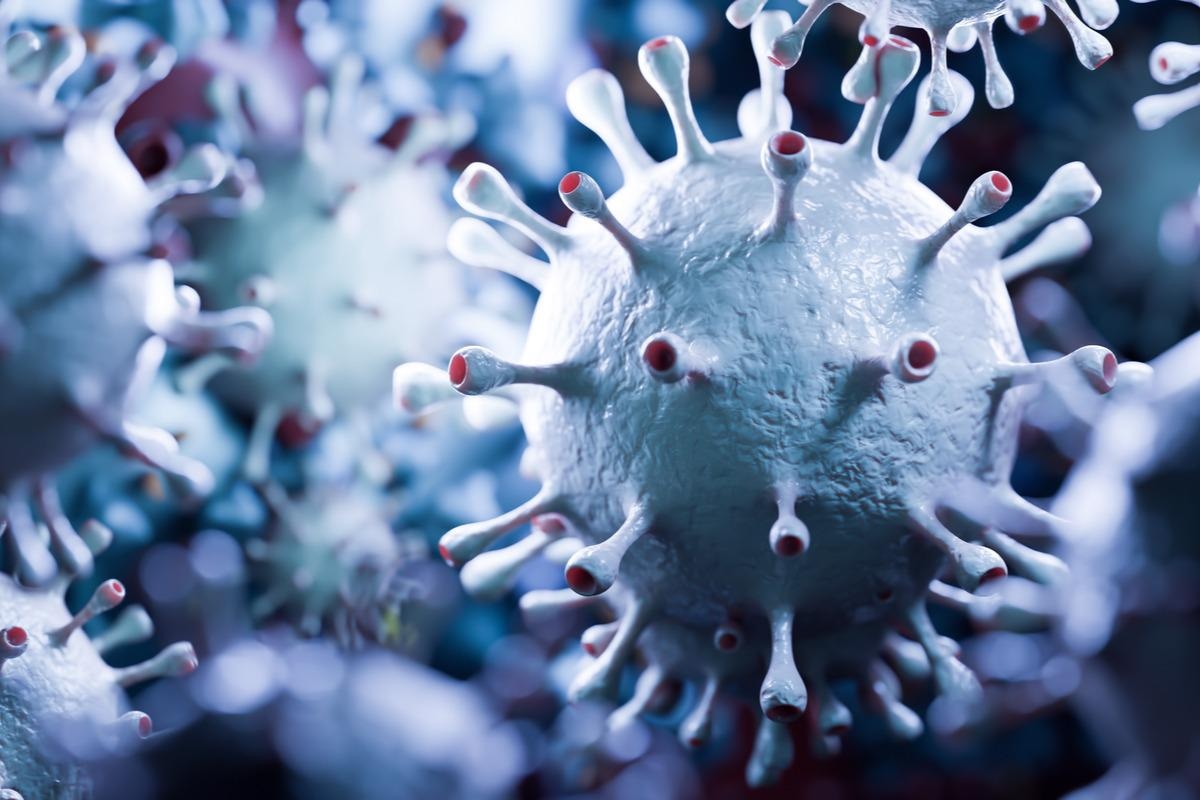In a recent study posted to the medRxiv* pre-print server, a team of researchers studied how severe acute respiratory syndrome coronavirus 2 (SARS-CoV-2) infection altered the expression of human endogenous retroviral elements (HERV) in lymphocytes of healthy blood donors (HBD).
 Study: SARS-CoV-2 induces human endogenous retrovirus type W envelope protein expression in blood lymphocytes and in tissues of COVID-19 patients. Image Credit: PHOTOCREO Michal Bednarek/Shutterstock
Study: SARS-CoV-2 induces human endogenous retrovirus type W envelope protein expression in blood lymphocytes and in tissues of COVID-19 patients. Image Credit: PHOTOCREO Michal Bednarek/Shutterstock
Severe evolution of coronavirus disease 2019 (COVID-19) dysregulates the host’s innate and adaptive immunity, resulting in lymphopenia and neutrophils/lymphocytes imbalance and weak interferon response, which basically are hyper-immune reactions. Such multifaceted immunological dysregulations raised questions about the pathophysiological mechanisms underlying the acute and post-acute COVID-19 symptoms or syndromes not directly related to the SARS-CoV-2 infection.

 *Important notice: medRxiv publishes preliminary scientific reports that are not peer-reviewed and, therefore, should not be regarded as conclusive, guide clinical practice/health-related behavior, or treated as established information.
*Important notice: medRxiv publishes preliminary scientific reports that are not peer-reviewed and, therefore, should not be regarded as conclusive, guide clinical practice/health-related behavior, or treated as established information.
HERVs present in the human genome have approx. 8% of human chromosomal sequences, and the rest are 22 families acquired from exogenous retroviruses via infection of germline cells. The abnormal expression of HERV usually becomes self-sustained, and therefore, they are the ‘dormant enemies within’ the host cells.
A study revealed that the expression of HERV-W envelope protein (ENV) in lymphoid cells from COVID-19 patients correlated with disease outcome making them biomarkers of lymphocyte exhaustion, further raising the possibility that HERV may have a role in COVID-19 pathogenesis. In addition, studies on HERV envelope proteins have shown their immunopathogenic and neuropathogenic effects in vitro and in vivo.
About the study
In the present study, the authors investigated the potential role of SARS-CoV-2 in triggering the HERV-W and HERV-K expression to evaluate their potential association with COVID-19 pathogenesis. Further, they analyzed its expression in lymphocytes and its possible detection in plasma of patients with COVID-19 presenting various clinical forms at early and late time points.
They also analyzed whether the HERV RNA expression was followed by HERV protein production. cultured peripheral blood mononuclear cells (PBMC) of blood donors were cultured with or without infectious SARS-CoV-2 and RNA was collected at 2h post-inoculation. PBMC cultures of independent blood donors, inoculated with SARS-CoV-2 or sham were collected at either 3 or 7 days post-exposure. The presence of envelope proteins of HERV-W, HERV-K, or SARS-CoV-2 nucleocapsid (N) protein was analyzed by immunofluorescence.
Finally, they examined this HERV expression in affected tissues from COVID-19 post-mortem samples and in brain parenchyma. For comparison with frequently affected human organs, they also examined these antigens’ expressions in lung and cardiac tissues.
Study findings
In the short-term, PBMC cultures from healthy donors, a single exposure to the SARS-CoV-2 virus in vitro showed that SARS-CoV-2 triggered both HERV-W and HERV-K ENV RNA transcription. However, only HERV-W ENV protein was detected during short-term primary cultures of PBMC from about 30% of healthy donors. In 27% of PBMCs from 3 out of 11 donors, HERV-W ENV RNA levels were increased after exposure to wild-type SARS-CoV-2 virus, and these donors also showed relative transcriptional activation of HERV-K ENV. However, the observed HERV-W activation was most likely due to the SARS-CoV-2 spike (S) protein.
In COVID-19 hospitalized cases with different severity statuses, HERV-W ENV protein was expressed at the membrane surface of T-lymphocytes, mainly on CD3low T-cells. All severe COVID-19 cases were tested positive for HERV-W ENV protein in plasma, indicating its role as a disease severity marker.
HERV-W ENV was also strongly expressed in lymphoid infiltrates in tissues surrounding lung alveoli and within nasal mucosa. In addition, it was detected in blood vessels endothelium from all tissues, including cardiac muscles, pericardiac fatty tissue, and the central nervous system (CNS). In the CNS, HERV-W ENV expression was found in microglia, strongly suggesting its role in neurological symptoms and cognitive impairment persisting during post-acute COVID-19.
To summarize, the kinetic analyses of the study showed that SARS-CoV-2 activated the production of HERV-W ENV in cultured PBMC from a sub-group of healthy donors. HERV-W ENV expression was detected in T-lymphocytes from COVID-19 patients, and HERV-W ENV antigens were detected in all tested sera samples from severe COVID-19 cases in the intensive care unit, but only in about 20% of reverse-transcriptase polymerase chain reaction (RT-PCR) positive cases after early diagnosis.
Notably, the level of HERV-W ENV antigenemia increased with COVID-19 severity. More importantly, the immunohistochemistry of cell types relevant for COVID-19-associated pathogenesis showed the presence of HERV-W ENV within affected organs and particularly in brain microglia within the central nervous system (CNS).
Conclusions
According to the authors, this is the first-ever study to address the role of HERV activation and the expression of HERV proteins in perpetuating pathogenic pathways underlying severe and long-term pathology of COVID-19. The study results suggest that HERV-W ENV should be evaluated as a marker of severity, but more importantly, as a potential therapeutic target in COVID-19-associated syndromes.
In addition, future research should further characterize the HERV-W expression in the real-world setting to facilitate an understanding of the individual-level differences in its expression, in response to SARS-CoV-2 infection.

 *Important notice: medRxiv publishes preliminary scientific reports that are not peer-reviewed and, therefore, should not be regarded as conclusive, guide clinical practice/health-related behavior, or treated as established information.
*Important notice: medRxiv publishes preliminary scientific reports that are not peer-reviewed and, therefore, should not be regarded as conclusive, guide clinical practice/health-related behavior, or treated as established information.